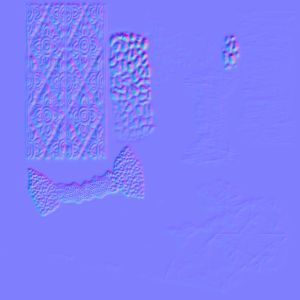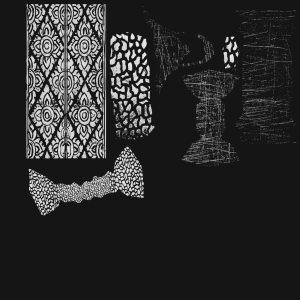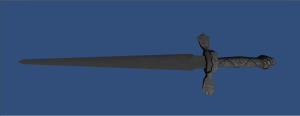This is an analysis of the board game Carcassonne, in this post I will examine some of the good things about this game but also some bad. I will take a look at the games core systems and how they interact with each other. I will also look into the game’s target audience and the reasoning behind it.
The game of Carcassonne is based on an actual French city with heavily fortified walls. Players take the roles of founders of the area and their ultimate goal is to move in on the terrain. There are elements of strategy and luck, which makes for a diversified game experience. The game can be described as a mix of puzzle building along with elements of strategy, all while trying to claim territory.
Here are some of the things that I think made the game worthwhile to play.
The game is very social and does very well when played with more than 3 people. It’s very easy to learn and no one can be eliminated. Also it doesn’t take long to get a grip of the games rules. Because of the fact that many tiles that the players use to extend roads, cities and monasteries are faced down on the table there is always a feeling of suspense when it’s your turn to draw. Another good thing is that since there are so many different pieces of land or city in the game the end results almost never look the same as it did the last time.
There were some negative things that I would like to point out.
One thing that struck me as sort of a negative trait was in fact the name Carcassonne. I’d doesn’t say anything to me and it doesn’t describe the game in any way, if I saw this game sitting in a store shelf, it wouldn’t look at it twice.
Core systems.
Creating long segments of road, building large cities or farms gains points. At the end of the game, when there are no tiles remaining, all incomplete features are scored. Points are awarded to the players with the most followers in a feature. If there is a tie for the most followers in any given feature, all of the tied players are awarded the full number of points. In general, points are awarded for the number of tiles covered by a feature; cloisters score for neighboring tiles; and field’s score based on the number of abutting completed cities.
Your objective is to gather points and move up the scoreboard, the player with the most points in the end is the winner. When it’s your turn you get to draw a card that is face down on the table. On each players turn, they will place a new tile onto the table and connect them to other pieces already on the board.
The core game systems are divided into several steps:
Step one:
Players will draw a tile from a pile and each tile will feature one of these three. They can be green farmland, a rustic road, or a medieval city. Players will then have to decide on where to place this tile on the board. Players cannot just randomly place the tile anywhere. They must attach to any previously played tile and must match all sides to place the tile. The other feature will be a cloister/monastery that is located in the middle of the tile. Each one of these landscapes can build on to places the player has followers on or gives options for players to put their followers in the next step.
Step two:
During this phase, a player may place one of their followers from their supply on to any of the 4 possible land types on the tile they just played. If they take one of these spots in the farmland, road, city, or cloister the follower now takes the role of a farmer, thief, knight or a monk. These followers will remain on that tile until the road, city or cloister is completed. The farmer will stay on the board until the end of the game. The one catch with playing a follower is that no other player’s followers can be on the same connected land type, even yours. For instance, if you attach a piece that connects to a city segment, you can’t place a follower in the city if another knight is already in that city. Part of the strategy of tile placement is to place tiles that allow you to later connect with larger roads, cities and farmland.
Step three:
All the types of land above can be completed before the game ends. Players receive a point for each tile that is used to complete the road. The city tiles form a completed city when the segments are fully surrounded by a city wall. The player that has the majority of followers in that city they gain two points per tile. Once all areas around the monastery tile are filled, the player receives nine points. Players can gain points on other players turns if that player completes any of the features above. Every time you or another player complete one of these segments, you gain the follower back into your reserves. It’s a balancing act to keep enough followers in your supply and try to put as many tiles as possible on each segment to gain the most points.
When the last tile has been played, all uncompleted segments of road, city and cloisters are counted. Farms values are determined at the end of the game. Farms are separated by cities and roads on the game board. This is one of the more confusing parts of the game. It takes a decent amount of explaining to make sure people understand how these are scored. Once the owner of each farm is established they gain 3 points for every completed city that borders the farm.
Players need to decide if they should finish one of their cities and gain the points or place it next to another city to attempt to steal some points from another player by placing one of their followers on the others players city.
There are several elements of this game that spoke to me, here is one of them.
When picking up a card the most logical move is to try to extend your own city or road, but there are other things you can do. Carcassonne allows two or more players to compete over control over cities and if you just picked up a city piece that doesn’t go anywhere on your own establishments there are several choices for you to make. You could either extend your own city, thus requiring you to find more pieces that fit in order to complete it. Or you can start a new city and place another follower there (if you have any left). Or you can choose to extend another players city and either place one of your own followers there and try to elbow your way into the points that can be earned there or simply extending it delaying his or hers chance of finishing that city and collect points for it. When you add a piece onto one of your opponents establishments the option to add one of your own followers in order to try to take points away from your opponent seems like an easy choice. But you have to keep in mind that you do have a limited number of followers at your disposal and if your next card turns out to be a monastery, being stuck with no followers is a real bad thing. Basically this game requires you to make the best of the situation. There is a substantial luck component to the game; however, good tactics greatly improve one’s chances of winning.
Target audience
I would say that this game is fun for both children and adults. For children the ”farmers” could be a little too complex, due to the fact that you need to plan ahead quite far, but the game works very well without that element.
The target age is 8 – 12 years, which is quite fair since there are some things that require some knowledge take the score for example: Each segment of city is 2 points + 2 additional points for each pennant during gameplay and 1 point per tile and tenant at game end. This makes for a pretty elaborate calculation when tallying the score and I think that some mathematical skills are needed.
Summary
Overall I enjoyed Carcassonne, the game was very easy to pick up and play, there weren’t a whole lot of complicated rules to abide to and since there aren’t any player eliminations and since the game relies largely on chance and luck (getting the right cards) I would say this was an excellent beginners game.
After reading some reviews of the game online it would seem that this game is considered a so called “gateway game” that is used to introduce new board game players. Since each turn is composed of three parts: Pick up / place tile, place follower, and try to finish segments of road, cities or place a monastery, there are no long waiting periods when other players make their moves, which makes replayability an option. And because of the relatively short play time there’s room for more playthroughs, and every round has a different ending due to the many different tiles and the fact that the tiles you get are random.
To summarize: great game, not too long, not too short. Not too complex, not too simple.
















